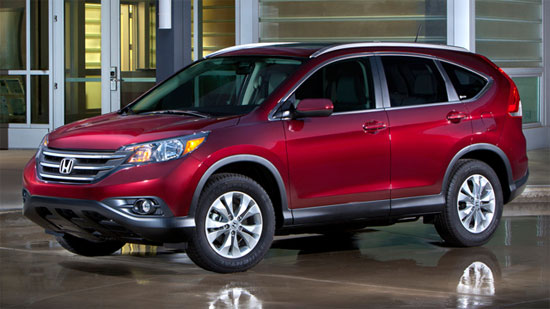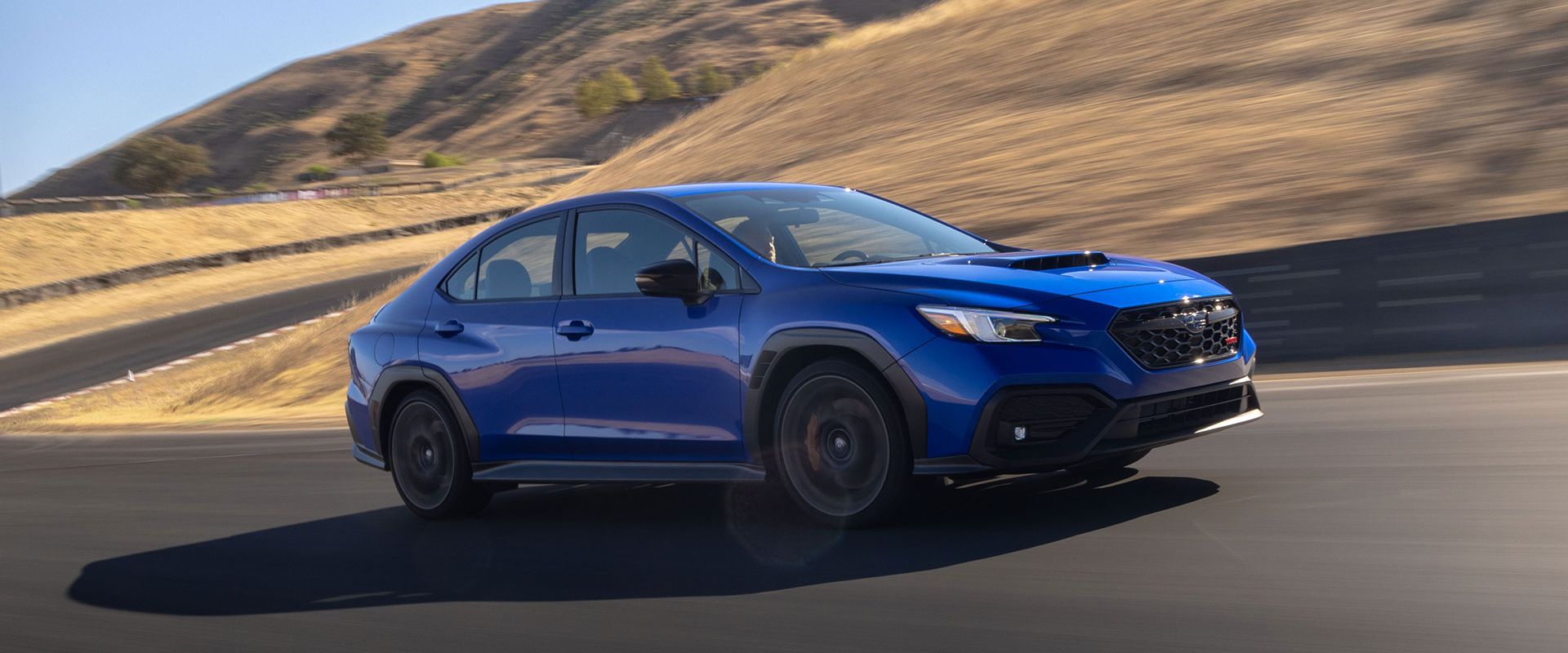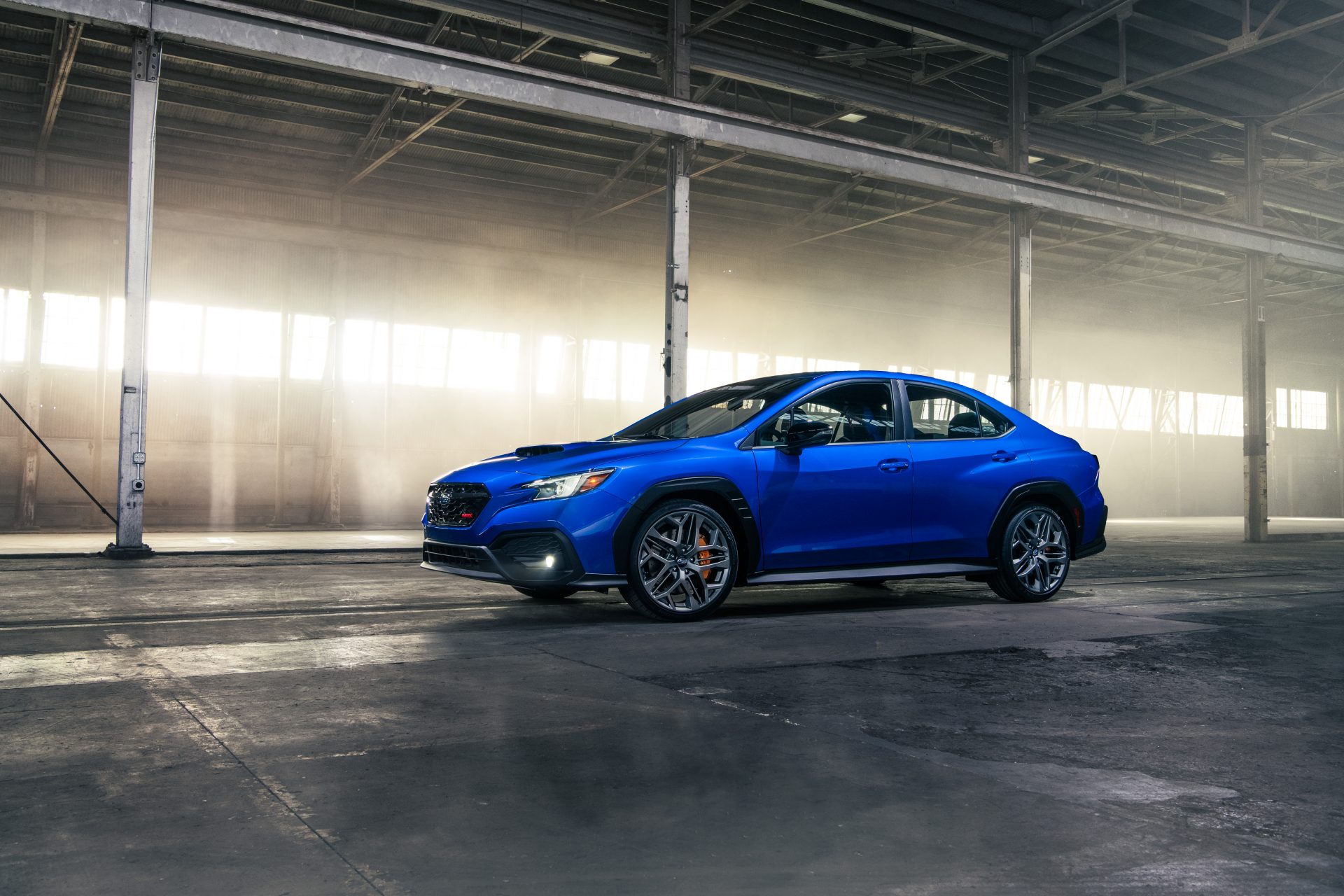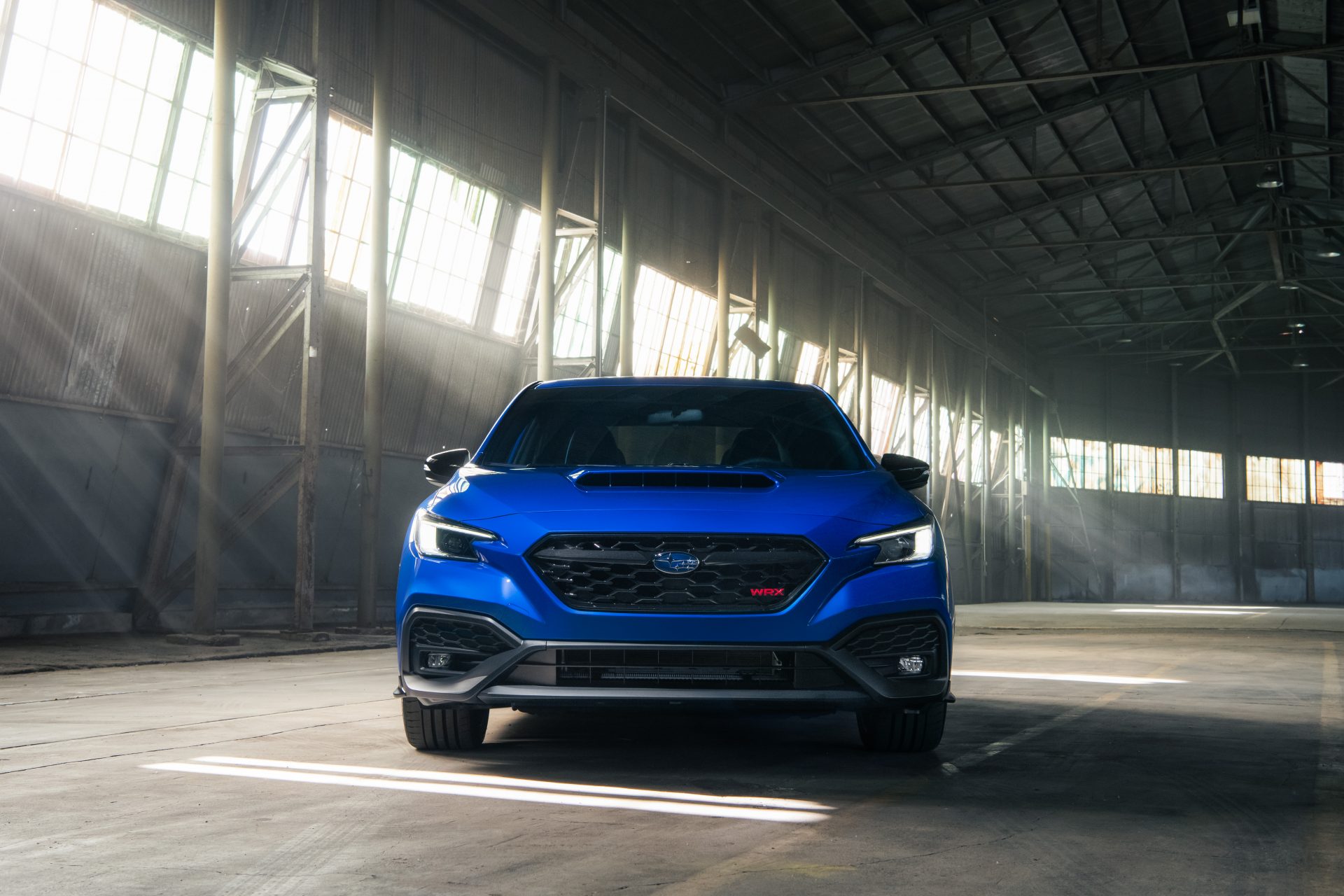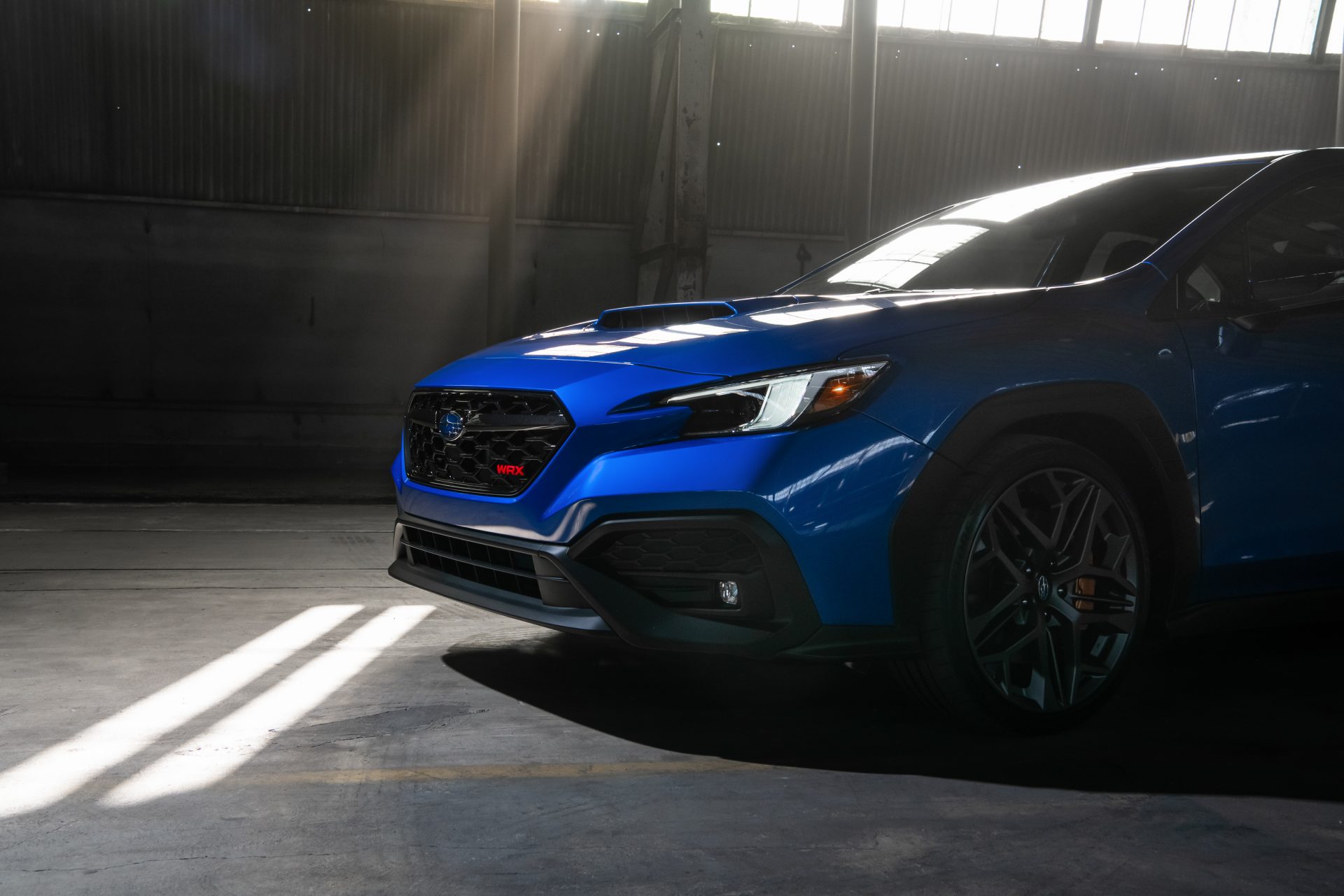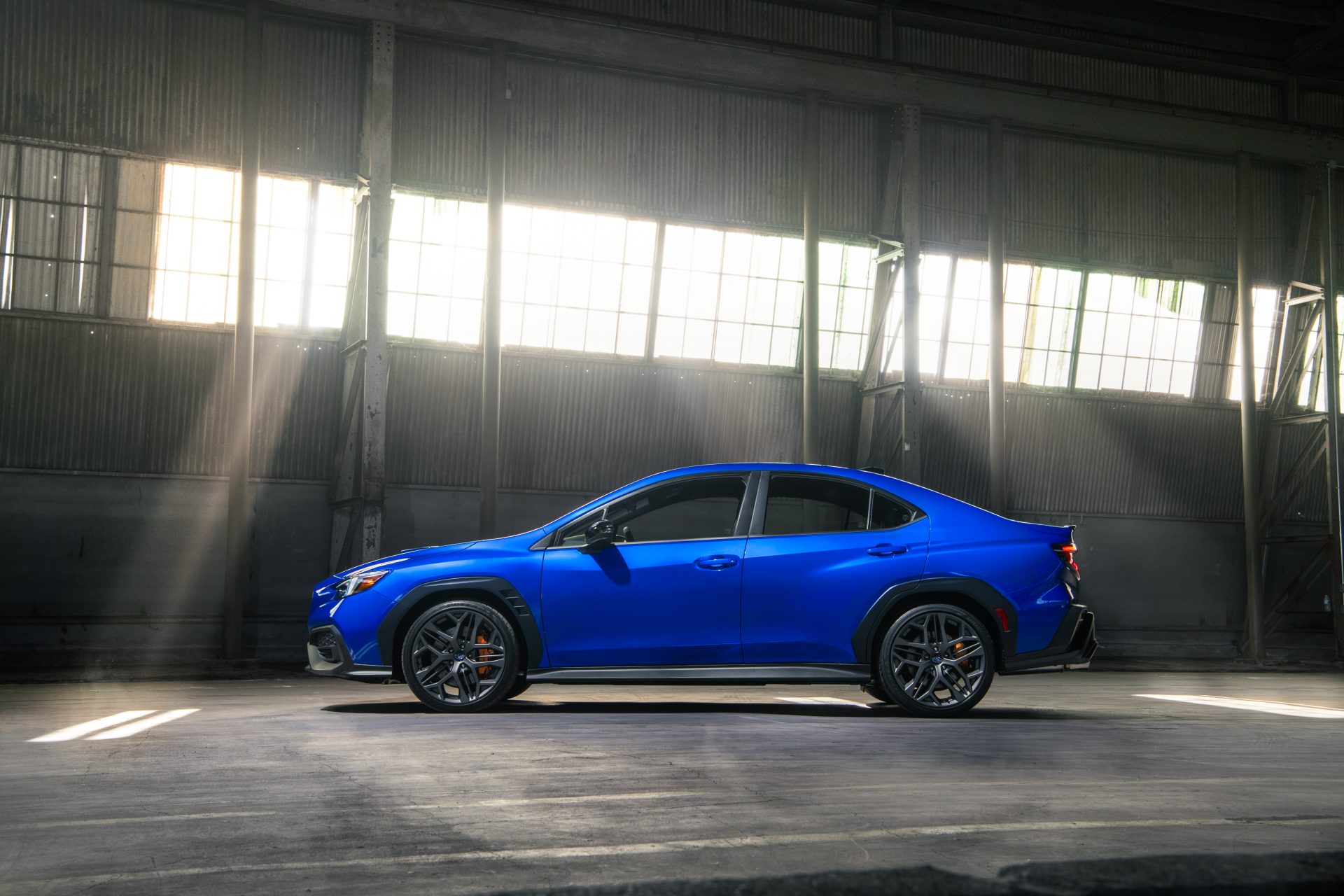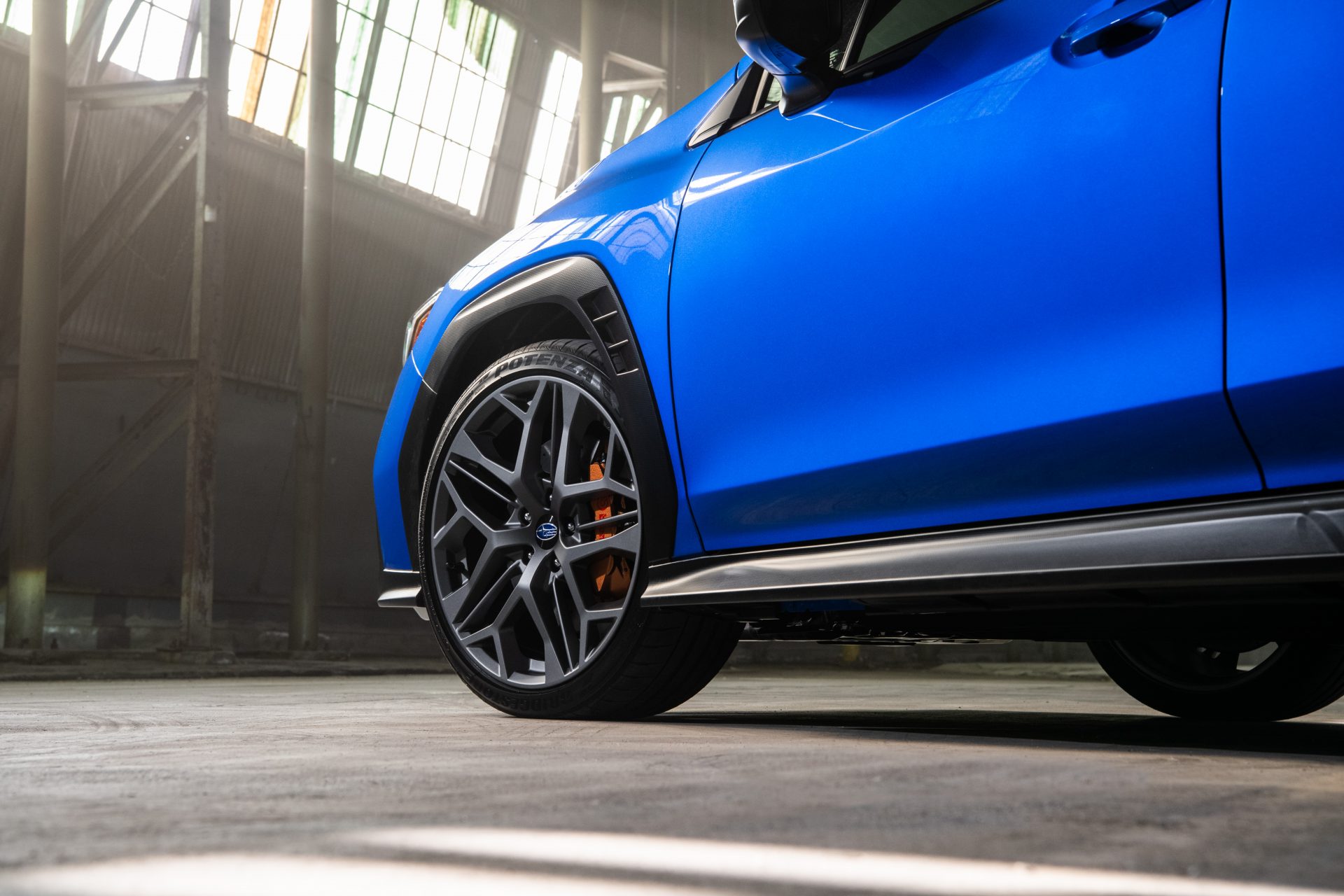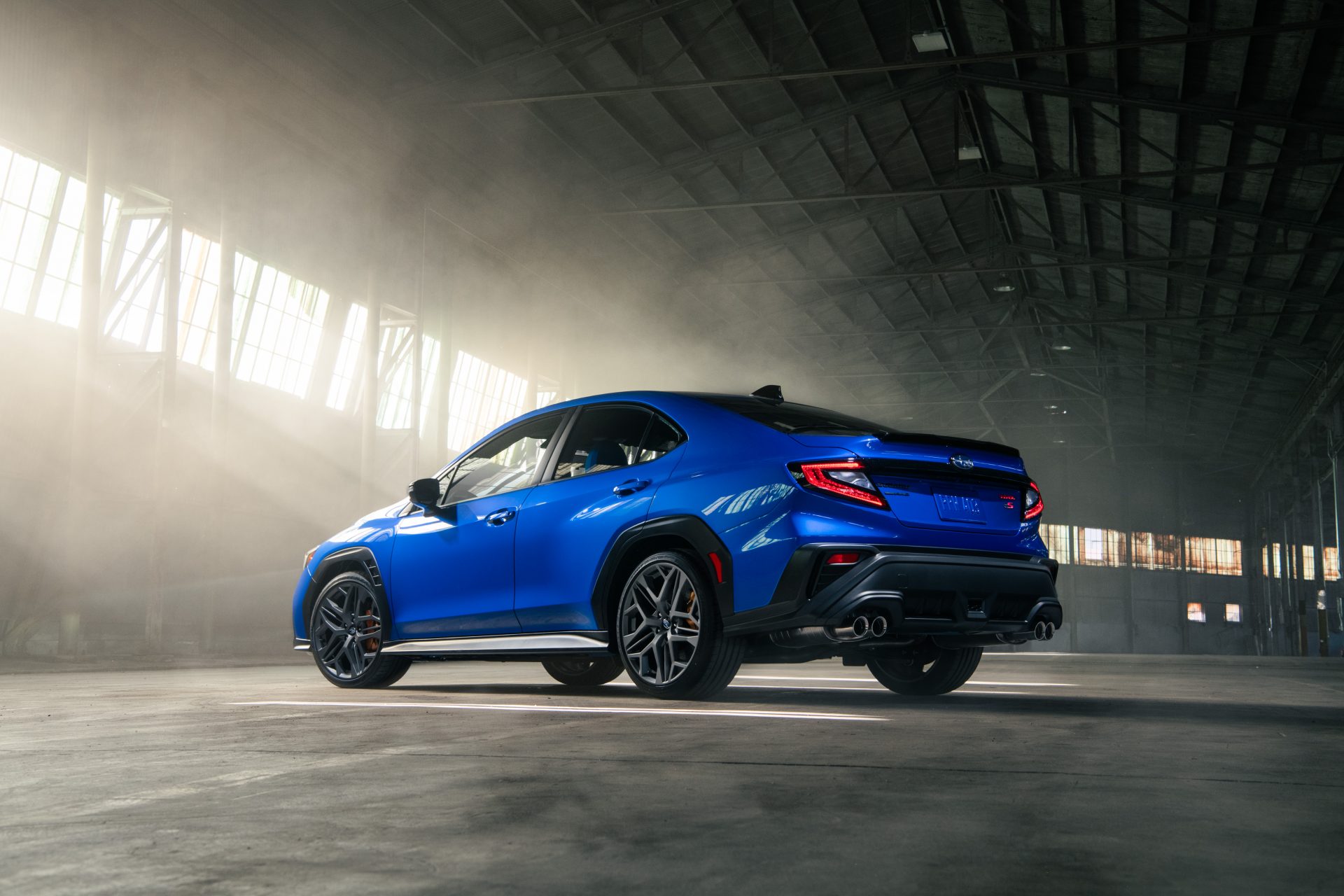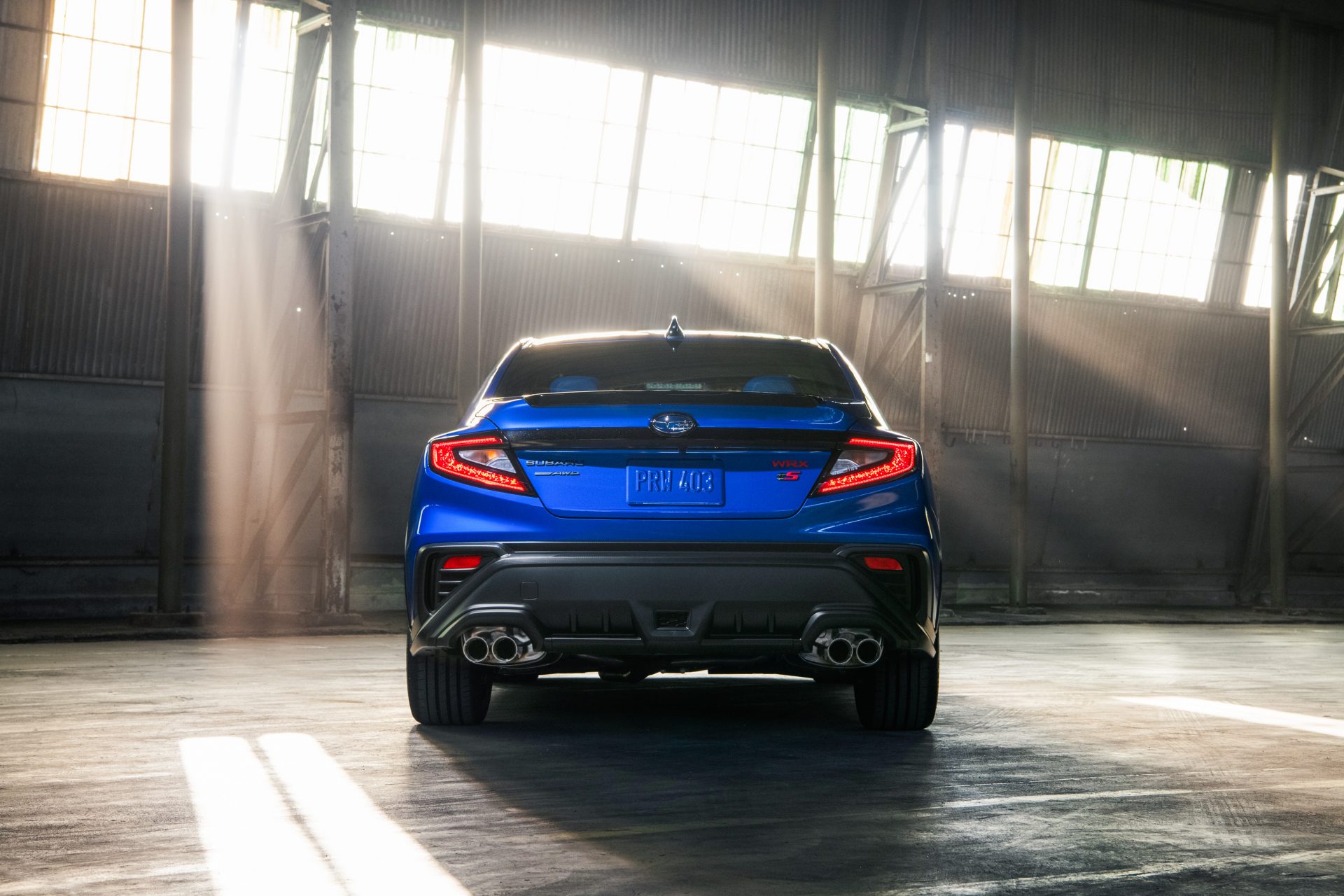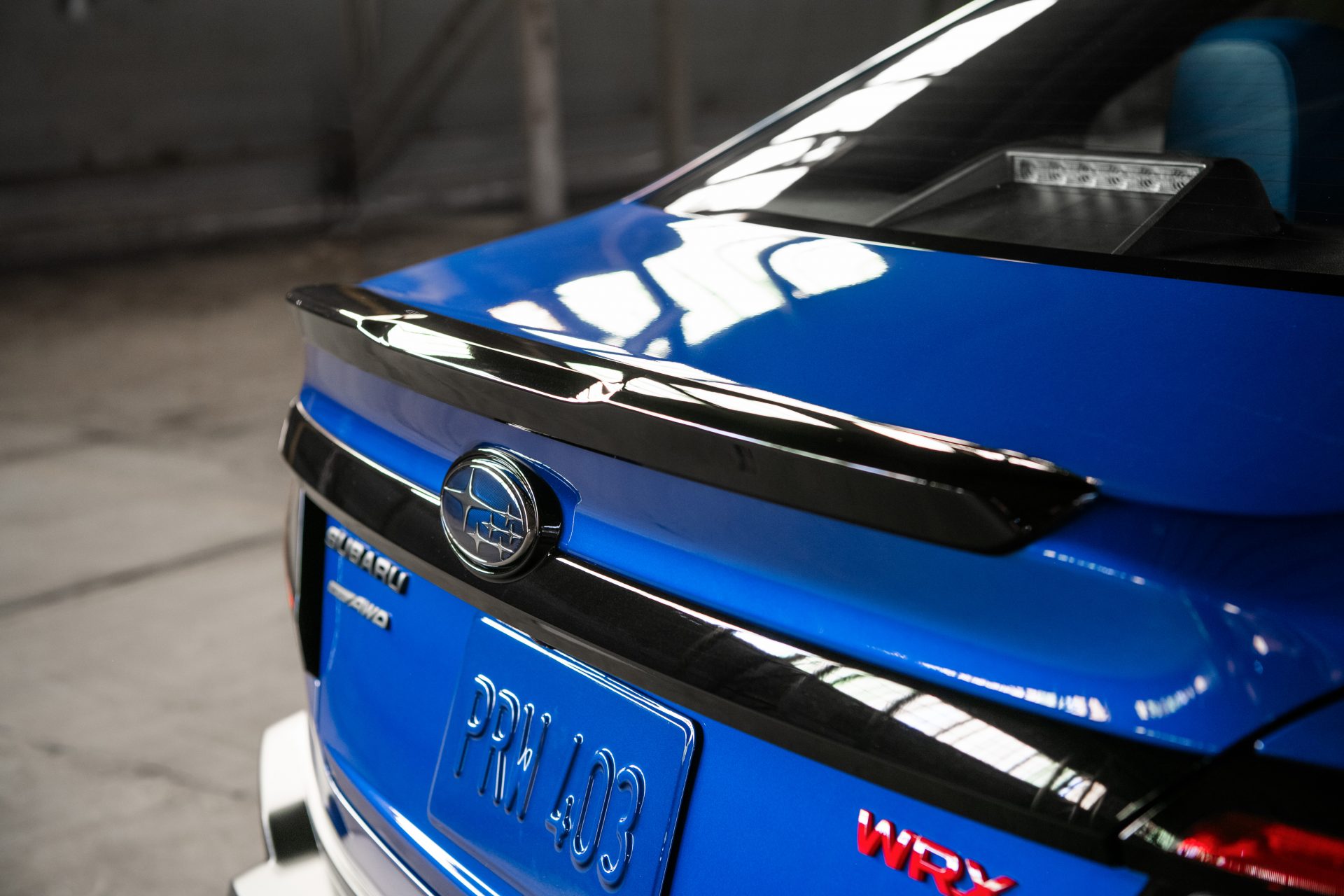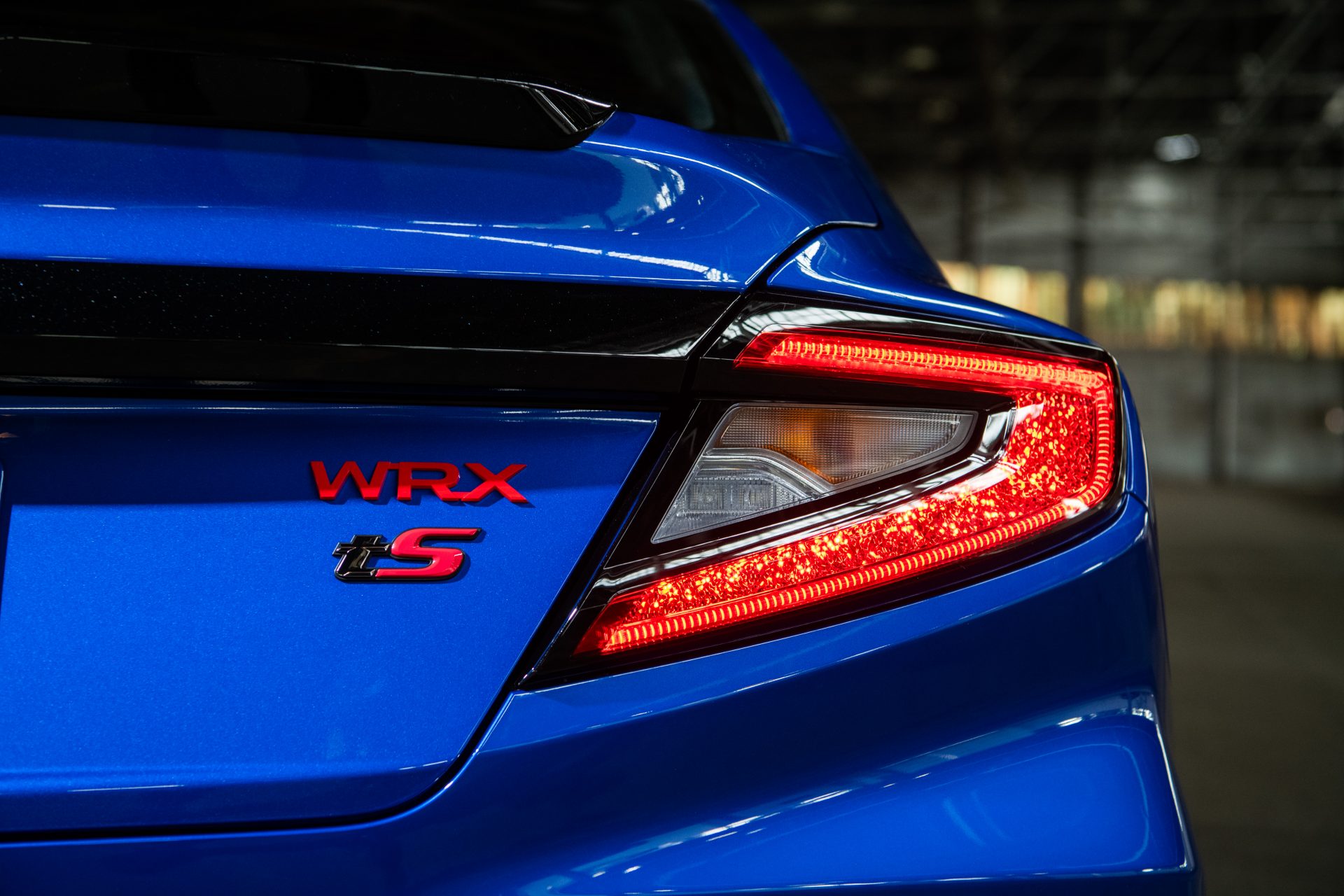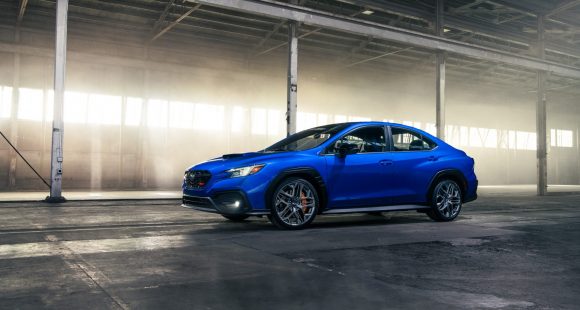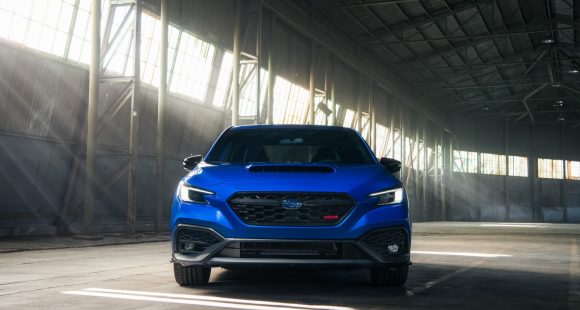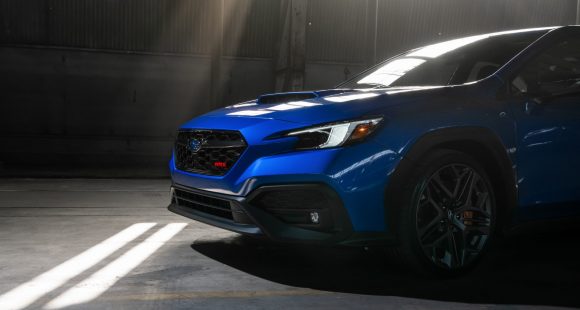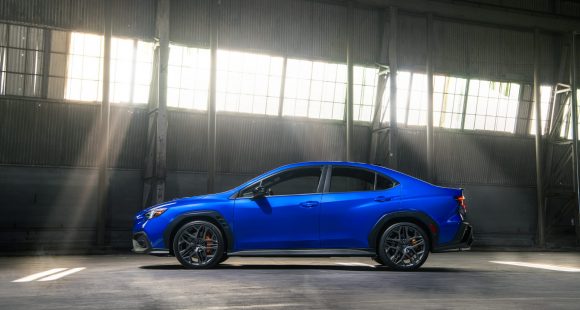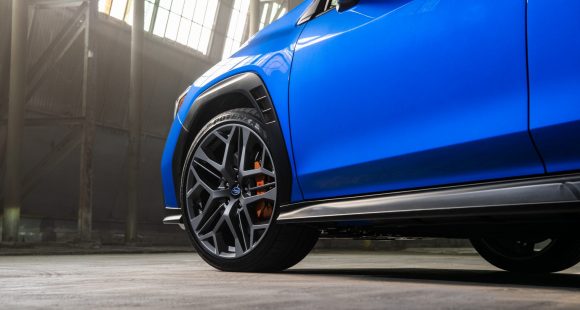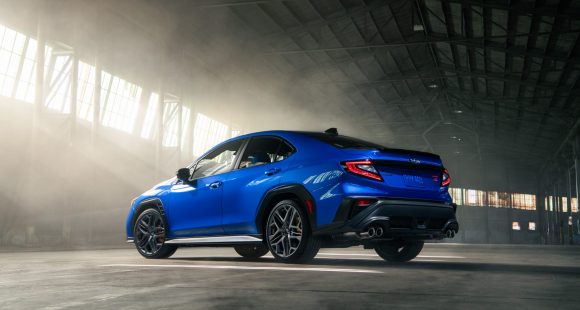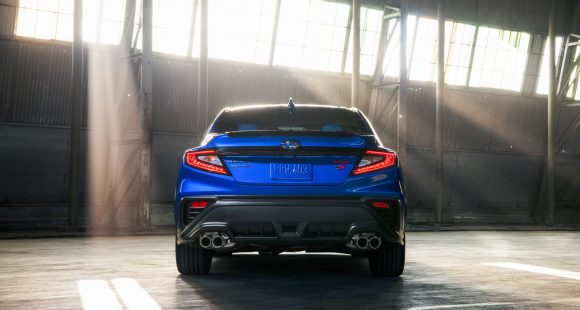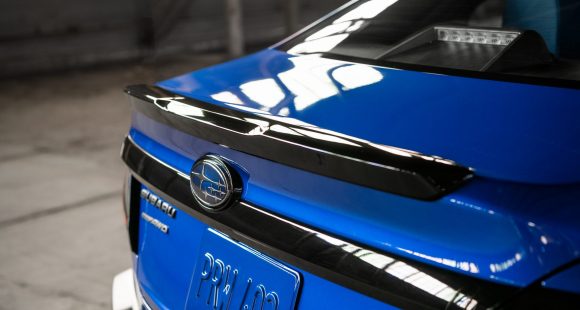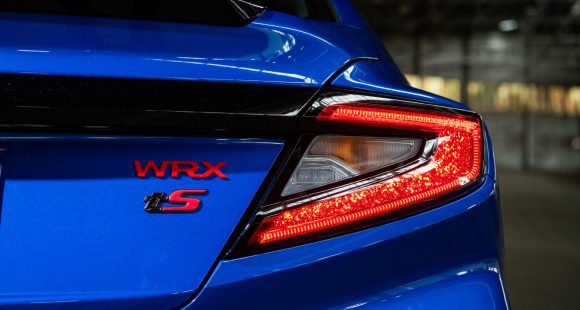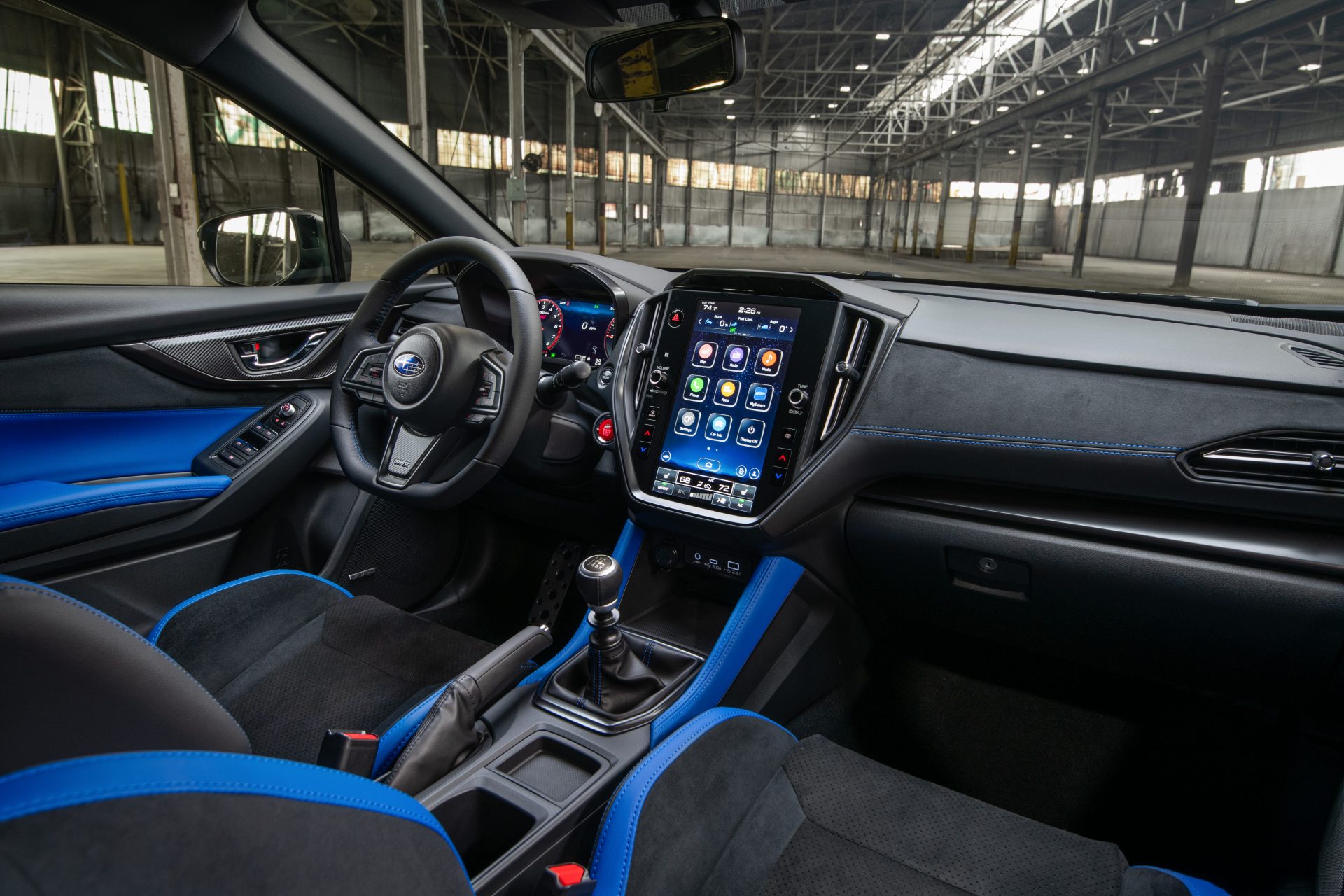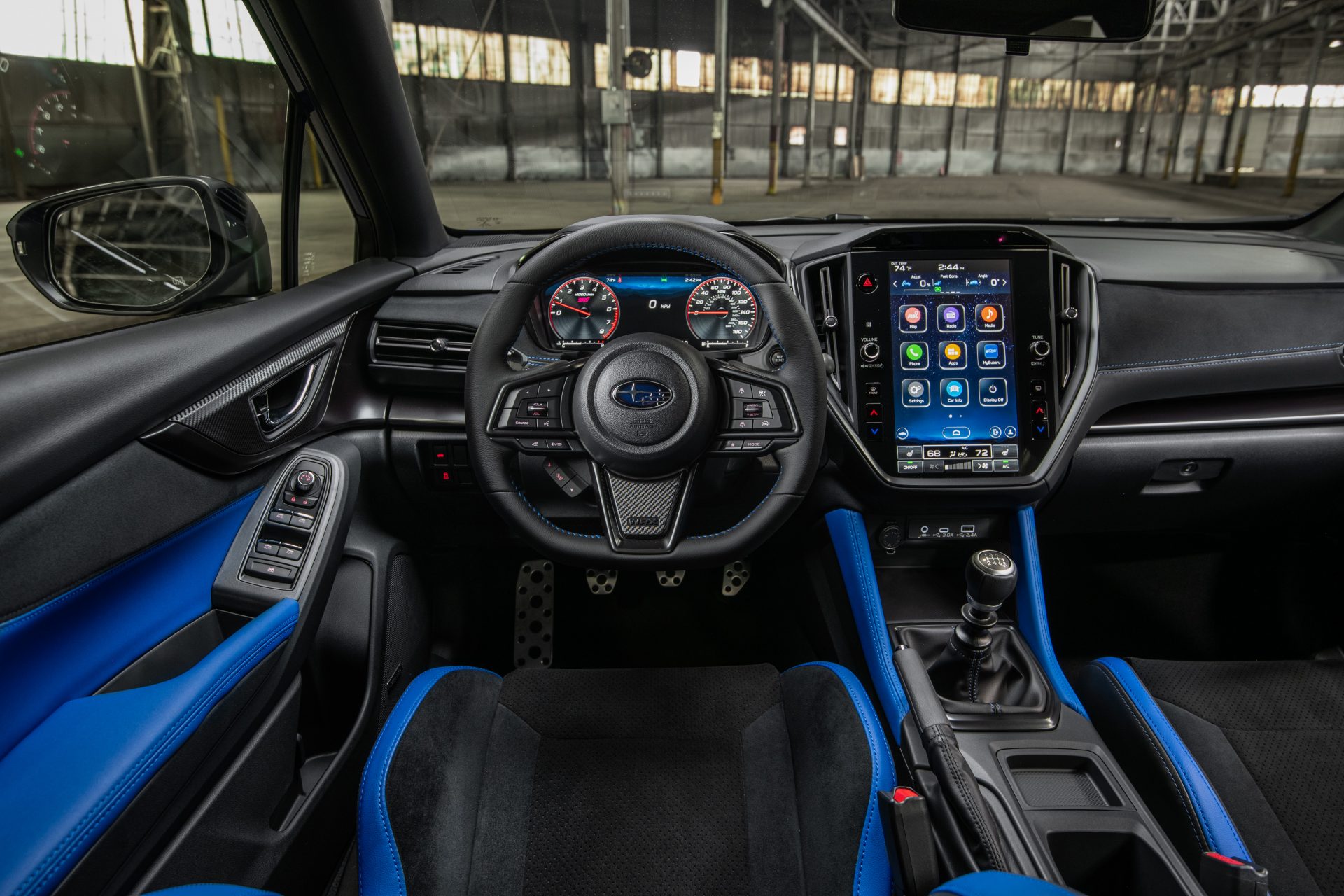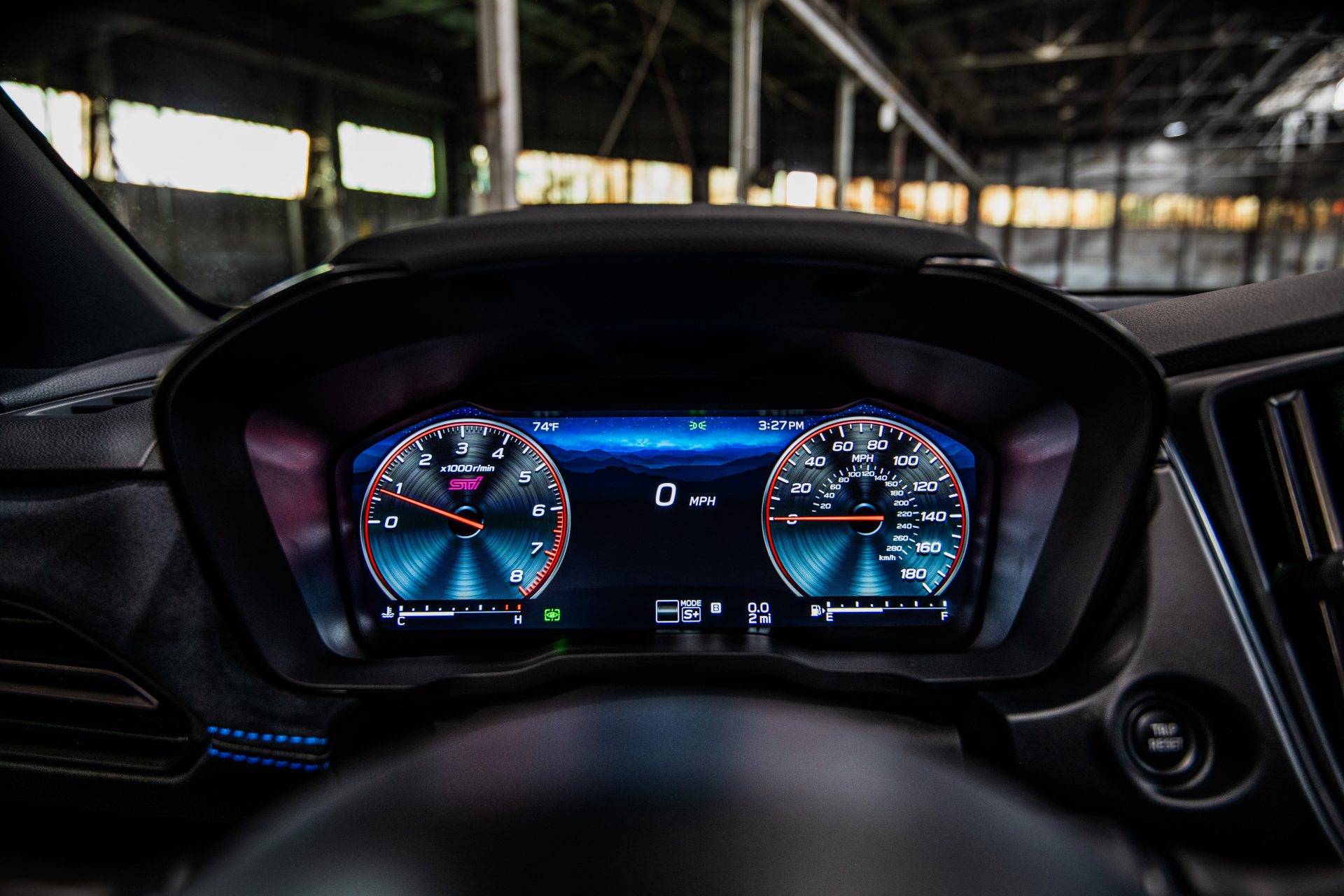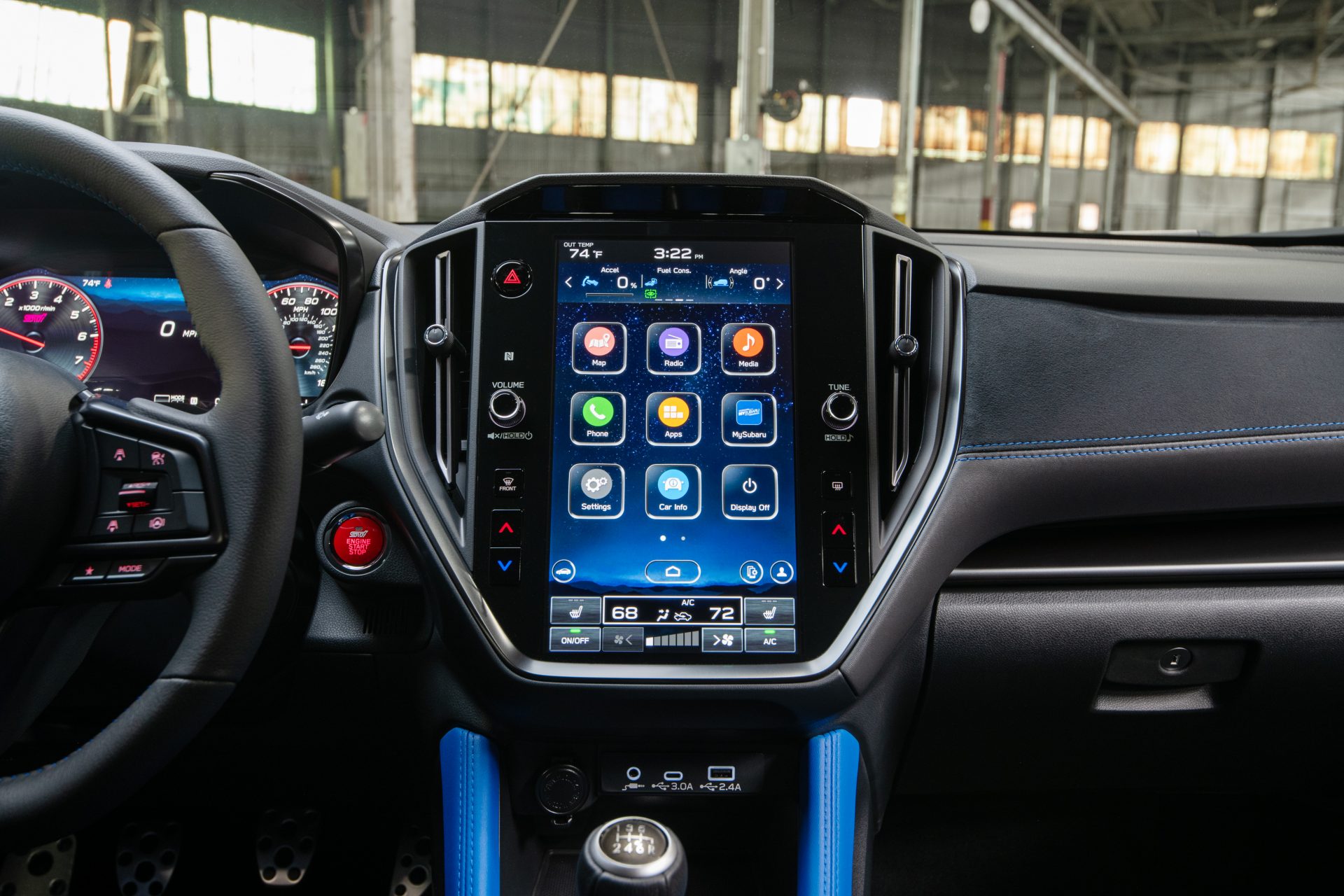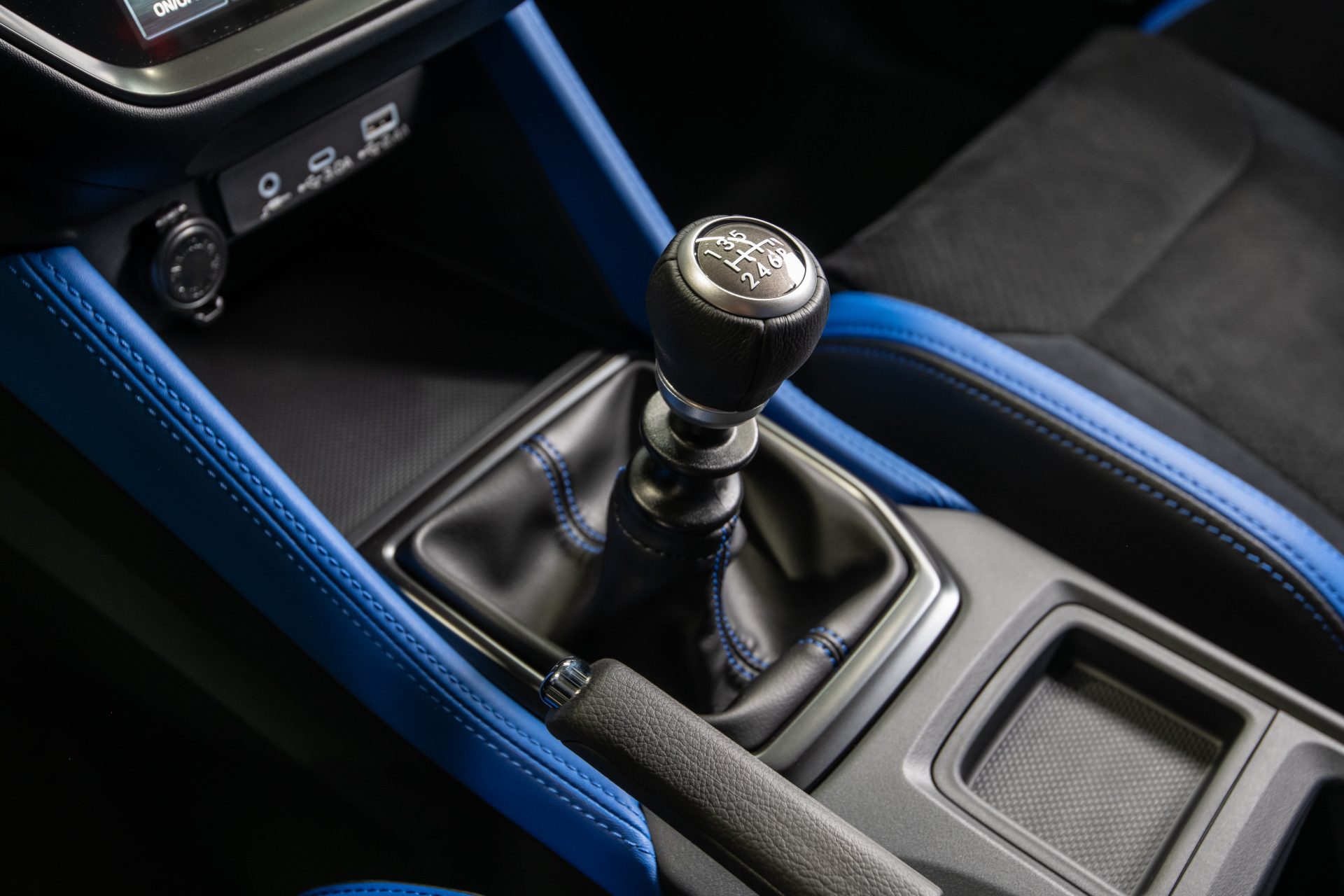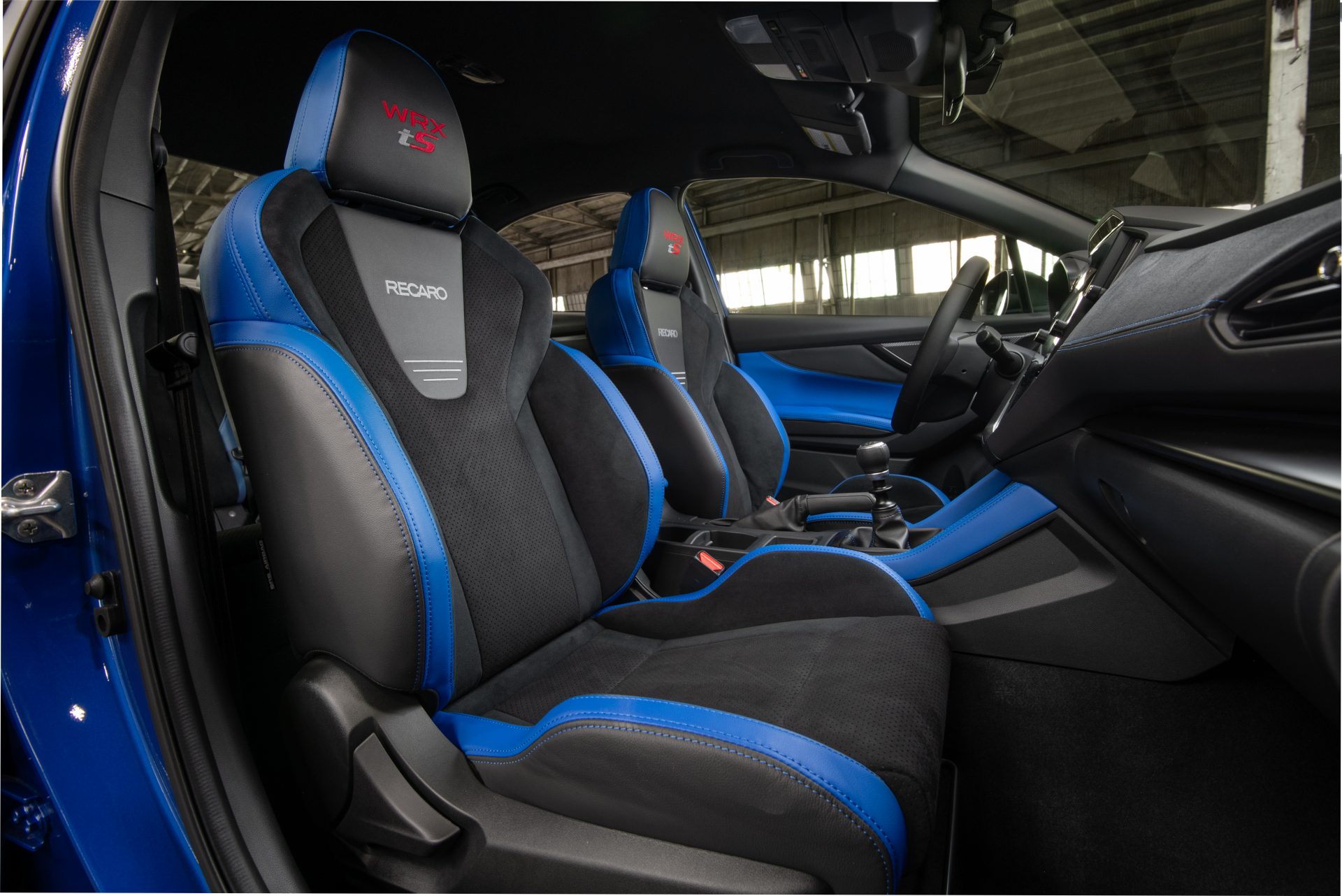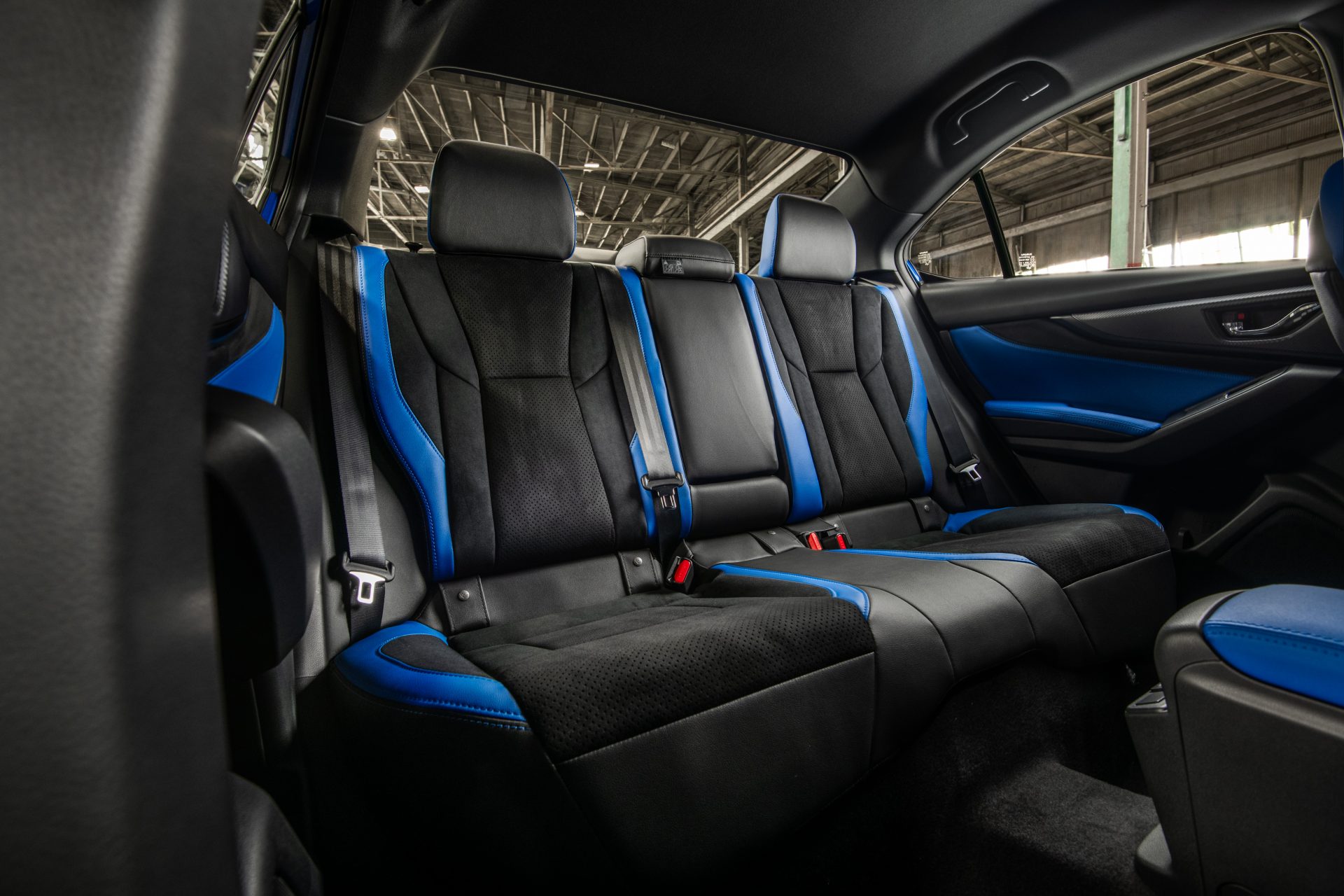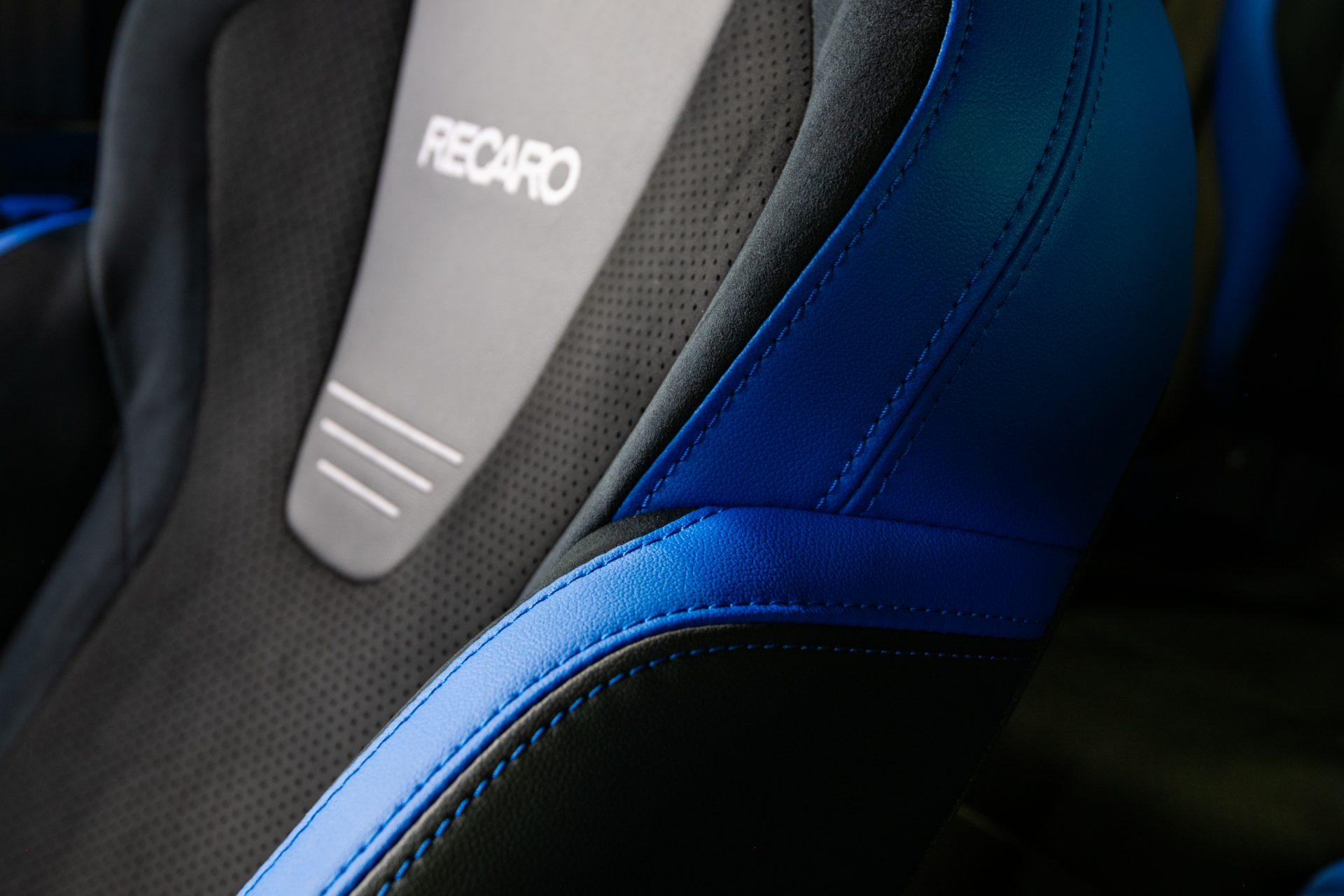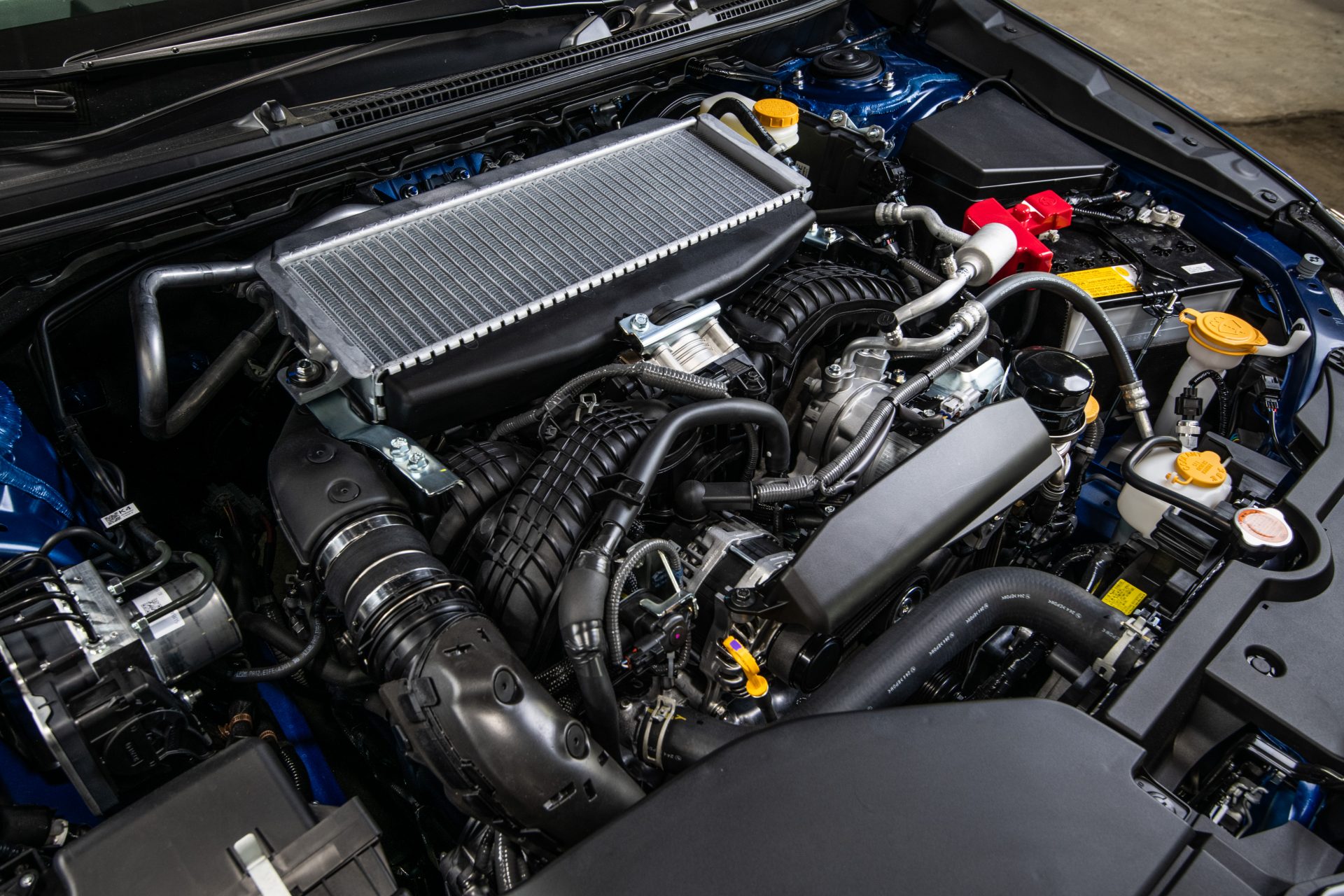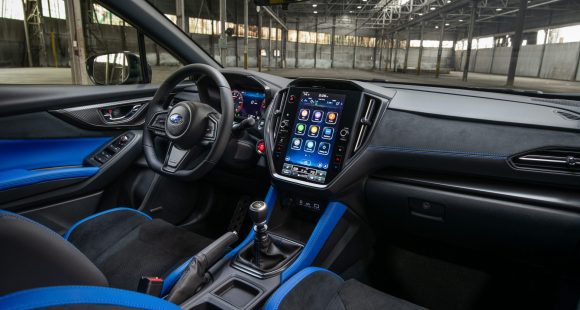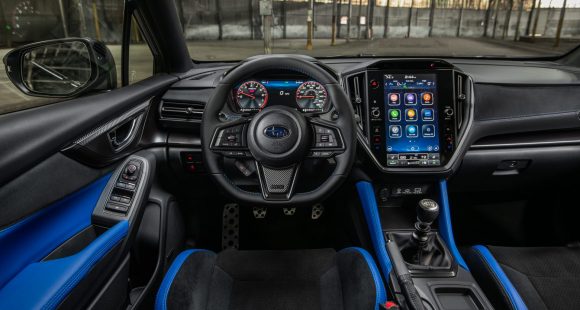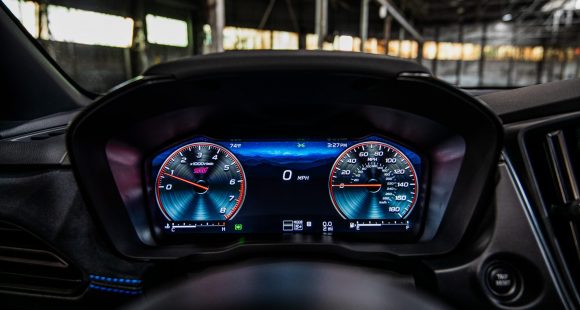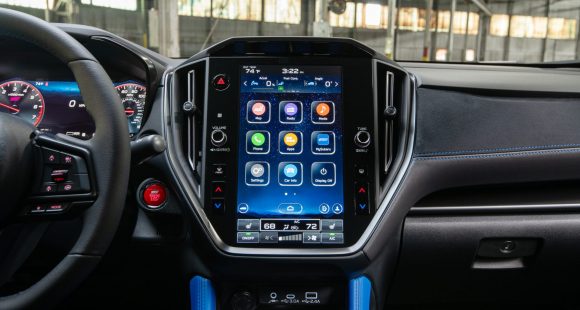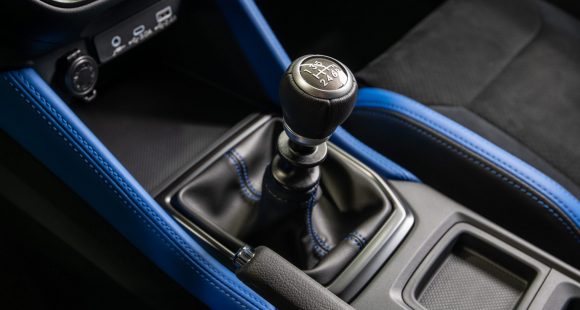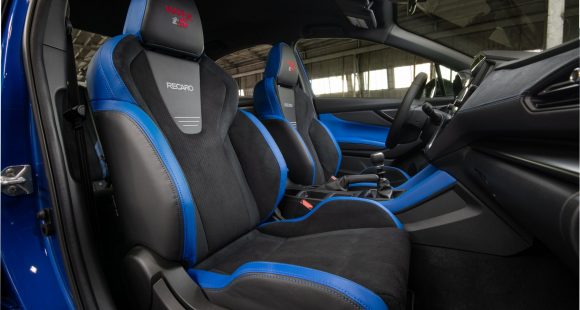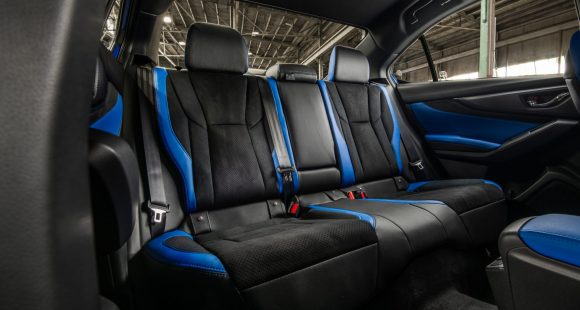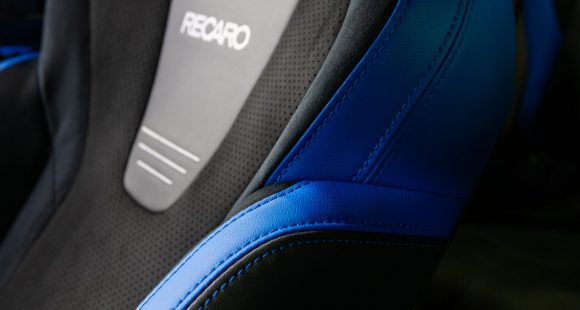The rush is on to market new small crossover utilities, and rivals have pegged the Honda CR-V as the one to beat. No wonder, our long term CR-V is stylish, ultra-practical, and very fuel efficient for its class. With 6,700 miles on its 185-horsepower 2.4-liter engine, we’re returning 28.9 miles per gallon of regular. Also, while the CR-V is officially a compact, we find that misleading since it has more seat-down cargo space than our mid-size Jeep Grand Cherokee. We also have no wants yet for the CR-V but we’ll keep looking.
2012 Honda CR-V
Through 3 generations, and with over 2 million sold here, the Honda CR-V has reigned as America’s top compact crossover for most of its 15 years on and off our state-side roads. So as you might expect, our expectations for the all new 4th generation CR-V are very high. So, come along as we find out if our confidence in the new CR-V is on target.
In typical Honda fashion, the 2012 Honda CR-V is more of an evolution than a revolution. That’s easy to understand, as it’s hard to mess with a winning formula that so far, rivals have not been able to crack. But, even for the CR-V, it takes constant tinkering to stay on top.
For 2012, the exterior has taken a fresher turn; it’s now far more engaging, yet still neither aggressive or controversial. And, Honda resisted the trend towards bigger cute utes, as the new body panels actually fit tighter around barely-altered dimensions. The wheelbase is carryover at 103.1-inches, but overall length is actually shorter than last year at 178.3-inches. The CR-V also sits almost an inch lower for improved aerodynamics and handling.
The front end has a bit of a squashed look as the pseudo-rugged lower black fascia pushes up towards the new 3-bar grille. Large multi-reflector headlights are set behind big clear lenses that wrap way back into the fenders. Fog lights come on all but the base LX model. Down the side, there’s more sculpting to the body panels. And, the side mirrors add a Ford-style extended view beveled edge for a wider rear view as no electronic blind spot monitoring is available. Silver roof rails are optional on all models, standard on the EX-L.
In the rear, the traditional high mounted vertical tail lights remain; only they’re much larger and wrap into the fenders in sort of a hockey stick style, and visibility has been improved all around. Standard wheels are steel 16-inchers, while EX and above come with 17-inch alloys.
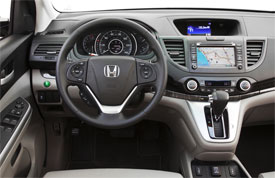 Despite that slightly smaller exterior, interior room is actually up. The CR-V offers true room for 5, with very comfortable seats up front; and a flat floor and wide bench providing every day space for 3 in the back. Gone is the open floor plan up front. Instead there’s a substantial center console with a huge storage bin.
Despite that slightly smaller exterior, interior room is actually up. The CR-V offers true room for 5, with very comfortable seats up front; and a flat floor and wide bench providing every day space for 3 in the back. Gone is the open floor plan up front. Instead there’s a substantial center console with a huge storage bin.
Seat-up cargo volume grows from last year to 37.2 cubic-feet, and the already low load floor has been dropped another 3½ inches. Our EX-L tester came very well equipped with heated leather seating, touch screen navigation and 3-mode back-up camera. Bluetooth for phone is a CR-V standard.
Borrowed from the Civic is the new iMID information screen. An SMS text messaging function can “read” incoming texts to you, and let you respond with one of 6 prepared responses by touch screen, or voice command. It works with Droid X, Blackberry, and others but not yet the iPhone 4.
Keeping your focus on the road and not texting will reveal that the driving experience of the CR-V hasn’t changed all that much. A stiffer chassis and a lower ride height contribute to an even more solid ride, and surer cornering, but this CR-V is still more comfortable than sporting.
The engine is a slightly revised 2.4-liter I4. Reduced internal friction and intake improvements add 5 horsepower over last year for 185. Torque is also up slightly to 163 lb-ft. The only available transmission remains a 5-speed automatic, but gearing has been revised with an eye towards fuel economy. An ECON mode is also new.
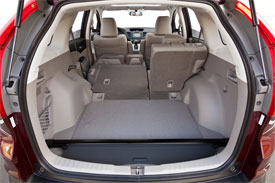 Government Fuel Economy Ratings with all-wheel-drive are 22-City and 30-Highway. Front-wheel-drive CR-V’s do one better at 23-City and 31-highway. Both are class best. The All Wheel Drive’s Energy Impact Score is a modest 13.7-barrels of oil consumed per year, with a Carbon Footprint of 7.5 annual tons of CO2 emitted.
Government Fuel Economy Ratings with all-wheel-drive are 22-City and 30-Highway. Front-wheel-drive CR-V’s do one better at 23-City and 31-highway. Both are class best. The All Wheel Drive’s Energy Impact Score is a modest 13.7-barrels of oil consumed per year, with a Carbon Footprint of 7.5 annual tons of CO2 emitted.
The CR-V also adds a new electronic all-wheel drive system. Even on dry pavement, some torque is diverted to the rear wheels when starting off. Last year’s purely hydraulic system required front-wheel slippage for engagement. The new Real Time AWD also interacts with stability control and the new Hill Start Assist for surer footing on inclines. As before, a multi-plate transfer clutch is used. AWD ground clearance is unchanged at 6.7 inches.
When announced, we expect prices for the 2012 Honda CR-V to be little changed from this year, starting just under $23,000. So, does the new CR-V have what it takes to stay on top? For now, we’d say yes. But, Honda had better keep an eye on some of their more dynamic rivals that are coming up fast. Still, we think CR-V fans will be very pleased with the 2012 edition. It’s more of what they bought their CR-V for in the first place. And, that’s all good.
Specifications
- Engine: 2.4-liter I4
- Horsepower: 185
- Torque: 163 lb-ft
- EPA: 22 mpg city/ 30 mpg highway
- Energy Impact: 13.7 barrels of oil/yr
- CO2 Emissions: 7.5 tons/yr
Long Term Updates
There are a lot of fine compact crossovers on the market as our recent comparison test showed. The winner of that shootout was the all-new 2012 Honda CR-V. Reasons included comfort, room, and features that promote versatility. After just over 2 months and 7200 miles on the odometer, efficiency is good at 25.9 miles per gallon of regular. By the way, that pretty much matches a key rival, the Mazda CX-5 that is also in our long term test fleet. There have been some complaints by car reviewers, including us that the new CR-V might not be new enough to stay on top. Still, it is nearly impossible to fault the total effort. There is a refinement to this 4th generation CR-V that its rivals lack. That alone will continue to make the Honda CR-V hard to beat.
Despite a slew of new compact crossovers in recent months, the Honda CR-V remains the industry benchmark and it’s easy to see why. Our long term CR-V delivers a near perfect balance of power, economy, comfort, and utility. Yes, we can nickpick a few things like the antiquated NAV system on our EX-L, and an interior wedded to hard plastics, but that’s about it. One notable improvement for this 4th Gen CR-V is a much better air conditioner that now easily handles triple digit temps. With just over 4 months and 10,500 miles under its tires, fuel economy is quite good at 25.5 miles per gallon of regular. And that’s with a 5-speed automatic transmission, one less gear than most rivals. We find the energy of the 185-horsepower 2.4-liter I4 to be more than adequate with a decent reserve for passing. So, the Honda CR-V undramatically rides on, waiting for other compact crossovers to take their best shot.
As to sales of the Honda CR-V, since its redesign a year ago it has outsold all of the rest of Honda’s utilities combined. While critics, including us, predicted a tough time for CR-V against so many great new rivals, the public still sees it as the compact crossover to beat. After 5 months and nearly 12,500 largely urban miles, the energetic 185-horsepower 2.4-liter I4 is spitting out decent fuel economy of 24.8 miles per gallon of regular, although it has dropped since last report. Out on the highway we’ve seen 30 and above frequently. And, this 4th generation CR-V is indeed great for vacations with a smooth ride and more cargo room than some mid-size SUVs. Our staff really loves the smart folding rear seats. Add a touch screen to the navigation system and the CR-V would be almost perfect. And, obviously, more buyers than ever tend to agree that the CR-V fits their needs the same way.
Our attitude about this 2012 Honda CR-V has actually brightened since we first tested it a year ago. While there are a lot of new compact crossover competitors, many with flashier styling and high tech hardware, the CR-V continues to soldier on doing many things better than any rival. Like ride which is smooth, controlled, and confident, even over serious bumps at interstate speeds. Or the incredibly easy to fold split second row seat. Why can’t every one design a seat system like this? Then there is mileage. While not quite as good as some; 25.4 MPG after 7 months and 15,000 miles, it is top drawer in power as the 185-horsepower 2.4-liter I4 leaves plenty in reserve for passing. We do have one fault. The windshield washers are not working. Yes, it has fluid. So, a trip to the dealer is called for.
Our recent trip south for winter testing once again put our Honda CR-V on the open road. Filled with people and gear, we continue to be impressed with how well this compact crossover does everything well. And, that includes fuel economy which after over 22,000 miles and 8 months stands at 25.7 miles per gallon of regular.
The 185-horsepower 2.4-liter I4 leaves plenty in reserve for passing, although we are noticing a bit more valve noise than when new. The windshield washers are working again. The pump motor failed. Other than that, our CR-V has been fault free.
Seats are very comfortable and for a compact crossover there is little want for more room, front, back, or in the cargo bay.
If Honda ever enters the 21-century with their navigation system, the current one is cumbersome to use, the Honda CRV will approach crossover perfection.
Our 2012 Honda CR-V has turned out to be a real workhorse. Whether it’s hauling crews to shoots, or kids and pets to vacations, it’s always on the go. No wonder after 10 months we’ve already topped 24,000 miles.
A high point has been the CR-V’s combination of robust power and fine fuel economy. 26.9 miles per gallon of regular so far.
Very few low points. One minor one is the left foot dead pedal pad has come unglued from the carpet.
The CR-V is a good value too. Our loaded EX-L with Navigation costs less than most comparably equipped rivals. And, we’re amazed at how much cargo it holds. Its available all-wheel drive system digs right in with completely invisible operation. Clearly the Honda CR-V deserves its class benchmark status.
When we’re asked which compact utility to buy, the Honda CR-V is always a top suggestion. There are other small crossovers that have an edge in economy, features, or styling. But, none covers the essentials with more quality and value than the CR-V.
As it leaves us, this 2012 EX-L with Nav CR-V has been extremely reliable and consistent over 12 months and nearly 28,000 miles.
Our only fault was the left foot dead pedal pad came unglued. The CR-V’s cargo bay is larger than some mid-size utes, and the second row seat is a snap to fold.
The smooth if slightly noisy 2.4-liter I4 engine has a broad power band, and returned a good test average of 26.5 miles per gallon of regular. The all-wheel drive system worked seamlessly too. Indeed, both on and off-pavement performance proved excellent.
As we say about a lot of Honda products, the CR-V may not be the best in any one area, yet it does everything well above average.
2025 Subaru WRX tS
Subaru’s “World Rally eXperimental” Gets Tecnica-Tuned Tech
Building on its global rally heritage, WRX has been a standalone Subaru nameplate, marketed separately from garden variety Impreza, for two generations now. And while the current WRX still lacks the full STI treatment, this WRX tS serves up some of that high-performance spice we’ve been longing for.
Before we go flat out into our Track Test of this 2025 Subaru WRX tS, lets open the Subaru dictionary so we’re all on the same page. “tS” stands for “tuned by STI;” and “STI” is an acronym for “Subaru Tecnica International,” the brand’s high-performance sub-group best known for upgrading the WRX— oh, that stands for “World Rally eXperimental,” in case you didn’t know.
All that said, STI has been largely dormant for this WRX generation, but this tS sprinkles more of their engineering magic into the mix. No, that doesn’t mean extra power, but does mean significant chassis-related improvements.
First, electronically controlled dampers, adjustable through the 11.6-inch tablet-style infotainment screen. That meant a softer “comfort” mode on the 10+ hour commute to and from Savannah’s Roebling Road Raceway. But once we were there, it was the firmer “Sport+” setting all the way, heightening response from the WRX’s throttle and already quick dual-pinion power steering system. There’s still some body roll for rally-esque weight transfer, but it’s well sorted and provides the “toss-ability” you want in a WRX.
Though if you do autocross your tS, which we implore you to do, you might feel the six-piston front, two-piston rear Brembo brakes first. The bite is strong, giving good rotation in the corners and plenty of “halt” for this 3,400 lb. compact with minimal fade, keeping us on track all week…until some unfortunate winter weather passed overhead. No worries here, as Subaru’s Symmetrical All-Wheel-Drive system got us to the track for some powdered deserts: Frosted donuts served up Michelin style, a set of winter tires different from the grippy Bridgestone Potenza S007 rubber the tS typically rides on. Some prior hot laps of California’s Sonoma Raceway gave credence to those Bridgestones, and showed us what this hot-compact can do in ideal conditions.
It’s well sorted and provides the “toss-ability” you want in a WRX.
Other tS enhancements are cabin-based, namely these beautiful blue Recaros. Most of our staff appreciated their moderately-aggressive bolstering on both street and track. And they’re even heated, too. Another tS-only appointment is this 12.3-inch digital gauge display. It mimics the standard analog gauges with some additional info, but can switch to a navigation mode for more convenient route guidance.
We do wish our tS came in the new Galaxy Purple or the trademark World Rally Blue, but this Crystal White paint wasn’t too shabby, contrasting its Cherry Blossom Red badging and blacked-out lip spoiler. Otherwise, the tS is like any other WRX, down to the hood scoop funneling air to the top-mounted intercooler.
Underneath is the same turbocharged 2.4-liter flat-four in all other trims, boxing at 271 horsepower and 258 lb-ft of torque. The freak winter weather stopped straight-line testing, but a 0-60 time estimate of 5.5 seconds is about as spry as you realistically need, pulling strong through most of the tach; though the 6,000 RPM redline required attentive shifting of the six-speed box, which the tS comes exclusively with. The throws are precise, if a little long, and the clutch is wonderfully weighted.
With discontinuation of the Base trim, pricing for the WRX now starts with Premium at $36,920. The tS is at the top of the lineup with the automatic-only GT, both starting at $46,875. All WRXs continue to be made in Gunma, Japan.
If you’re an enthusiast itching to do the tuning yourself, perhaps the 2025 Subaru WRX tS is not for you. But if you want a plug-and-play experience, this is it. While it won’t exactly bestow the loose-cannon, top-level driving skills exhibited by famous WRC drivers upon you, the tS moves this WRX’s game in a direction we’ve so desperately wanted Subaru to take.
Specifications
As Tested
- Engine: 2.4-liter flat-four
- Tranmission: 6-speed manual
- Horsepower: 271
- Torque: 258 lb-ft




